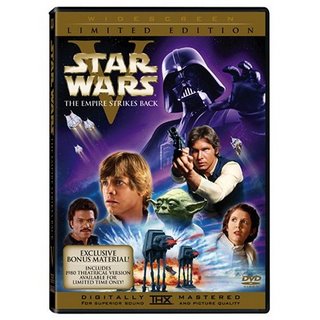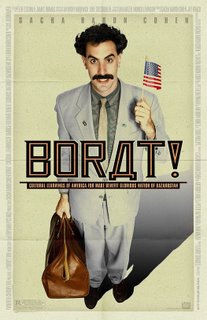
[Image comes from Alyon.org]
I apologize for the long absence. Holiday business is a pain- I enjoy Christmas but never the organizing-where-everyone-is part that precedes it. I also caught a wicked flu, and have been trying to finish a novel (was going for NaNoFiMo, but that's not happening.) But I decided I shouldn't let a Rob Liefeld book be my last review for the year, and though this one isn't really a rave either, it's more interesting and I can at least use it to acknowledge the talent of someone who passed away this year.
Though I'd heard nothing good about QUINTET, I was still compelled to seek it out- it's Robert Altman's only science fiction film, and an example of the then-rare phenomenon of A-list American filmmakers working in the genre. The post-STAR WARS generation has had no problem indulging in horror and fantasy and so on, but you didn't see it that often from the older masters. What's more, Altman co-wrote the script and the story, implying he wasn't just a hired gun (if he ever was)- though it's not typical of his work, it reflects some of his concerns and recurring themes. While not really successful, and at times a bit boring, QUINTET is a unique little movie which demonstrates that an ambitious failure can often be something worth looking at in itself.
The film takes place in the future, in the midst of what appears to be a new Ice Age. Essex (Paul Newman), a hunter who has helped to finish off the last of the seals, is returning to an unnamed home city along with his pregnant wife Vivia (Brigitte Fosey), to visit his brother Francha (Tom Hill). The city, like all of civilization, is not faring well; people essentially live at a medieval level of technology, and being of the opinion that mankind is pretty much doomed, bury themselves in an abstract game called "Quintet", the rules of which are never explained but which has a theme of hunting and pursuit. A shadowy assassin rolls a bomb into Francha's apartment after Essex has stepped out to gather firewood, and everyone inside, including Vivia, is killed. Essex hunts the assassin, named Redstone, into the depths of the city, only for the mystery man to be killed by yet another mystery man. Essex does find the body, and on learning the assassin's name and that he was involved in a city-wide Quintet tournament, impersonates Redstone and enters the tournament himself. Living inside a gutted hotel with the other players, "Redstone" discovers that some of them have effectively been contracted to hunt and kill each other, in emulation of the game itself. But he still needs to know why.
Unfortunately, you might piece that together fairly early on yourself- in fact, for a time I assumed it had been implied. I'm not going to give it away as such, suffice it to say that when it's revealed, it's unsurprising and makes much of what has gone on in the interim kind of pointless. QUINTET is structured much like a film noir, a genre Altman had worked with before, but the main plot is actually fairly sparse, and more time is given over to the existential question of what to do when death awaits at every turn.
A certain vagueness about things harms the movie. That civilization has gone downhill as a result of the climate changing is fairly understandable, but people behave as though mankind itself is about to go extinct, and the fairly young Vivia is referred to as possibly the youngest person alive. Her being pregnant is treated as a surprise, thus making her death more of a tragedy, but it's never actually stated that there is a problem with people reproducing- we don't have CHILDREN OF MEN taking place, as it were. So WHY people aren't at least trying to have kids is never made clear- if anything, one would expect the snowed-in and underworked inhabitants of the city to turn to mankind's most popular indoor sport pretty quickly. Lack of food seems like it should be a problem, as with the seals' extinction, but the whys and hows of it are also never talked about (no major character in the film ever actually dies of hunger or suffers from malnutrition, so who knows?). Even the game of "Quintet" is never shown in much detail, and we see absolutely none of it after Essex/Redstone enters, though we see the players paying to stay in each morning.
Strangely for an Altman film, the characters aren't developed very well- they seem to be acting more as symbolic representations than as people, which keeps them kind of cold and distant. So, without much in the way of plot detail, or much in the way of character growth, we get some philosophical conversations and a lot of wandering around the city. To the film's credit, the visuals are stunning, and one definitely gets the feeling that a lot of work was put into creating the world in which the film takes place. There are some interesting recurring images as well, including a pack of dogs who regularly show up to feed on the bodies of everyone who dies. Even with the atmosphere, though, the picture can't help but become dull.
Certainly, the point of the film becomes clear in the end, and the symbolism is effective. But what makes the best of science fiction work so well is the way the genre makes the abstract into the concrete- how it can embody bizarre ideas in forms specifically fitted to them. The game of "Quintet" could perfectly show life's mad struggle for survival, and the apocalyptic surroundings do a decent job of boiling existence down to the purest essentials, but neither the game or the apocalypse have much weight or reality to them. In addition, the feeling of pointlessness starts to bleed over to the viewer as well; once Vivia and the child have been killed, that's pretty much the last hope for humanity gone, so why mess around with the motives of a killer who's killed soon after anyway? There are no real stakes for anyone after a time, and since the ultimate answer is a predictable one, it's not enough motivation to pull you through the movie.
It's all a bit of a shame, since a lot of work clearly went into creating the world of the film. I've no doubt that there is more detail to the setting than we are allowed to see, something which is common to Altman's work, but which also makes me wish that what we saw was enough. As it is, there is a lot of unrealized potential here, and I can't really fault the filmmaker for trying, even if he failed to make the last essential connection. I may not be able to recommend QUINTET, at least not to general readers- Altman fans, however, as well as science fiction fans, should at least take a look for curiosity's sake. This isn't a good film, but I can't regret having seen it.
Story by Robert Altman, Lionel Chetwynd, and Patricia Resnick
Screenplay by Frank Barhydt & Robert Altman and Patricia Resnick
Directed by Robert Altman
Grade: C+
See you next year, everyone!











